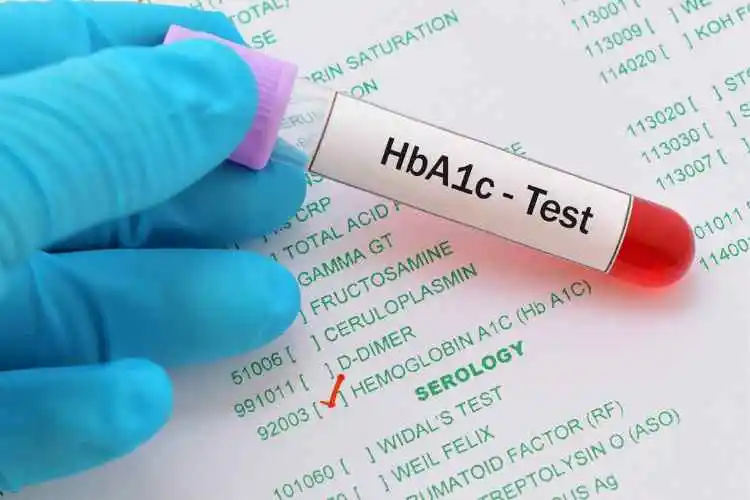I. Introduction
Living with diabetes requires diligent monitoring of blood sugar levels to manage the condition effectively. One crucial tool in this endeavour is the HbA1c test, which provides valuable insights into long-term blood sugar control. This article delves into the significance of Haemoglobin A1C testing in diabetes management, its understanding, importance, advantages, and the recommended frequency for testing.
A. Definition of Haemoglobin A1C Test
The HbA1c or glycated haemoglobin test measures average blood sugar levels over 2-3 months. It assesses the percentage of glycated or bound to glucose haemoglobin, reflecting the average blood sugar concentration during the lifespan of red blood cells.
B. Brief Explanation of Diabetes Monitoring
Diabetes monitoring involves tracking blood sugar levels to ensure they remain within target ranges. Consistent monitoring helps individuals with diabetes and their healthcare providers make informed decisions regarding treatment adjustments and lifestyle modifications.
C. Importance of Regular Monitoring in Diabetes Management
Regular monitoring is crucial for managing diabetes effectively as it enables timely interventions to prevent complications such as heart disease, kidney damage, and nerve damage. It empowers individuals to understand how their lifestyle choices impact their blood sugar levels and facilitates proactive management of the condition.
II. Understanding HbA1c
A. What is HbA1c?
HbA1c, or glycated haemoglobin, is chemically bound to blood glucose. The Haemoglobin A1C test shows the percentage of glycated haemoglobin, reflecting average blood sugar levels over the past two to three months.
B. How HbA1c Levels Reflect Blood Sugar Control Over Time
Because red blood cells live around three months, the Haemoglobin A1C test provides a reliable indicator of blood sugar control. Higher HbA1c levels indicate poorer blood sugar control, while lower levels suggest better control.
C. Relationship Between HbA1c and Average Blood Sugar Levels
HbA1c levels correlate with average blood sugar levels over time. For example, an HbA1c level of 7% roughly corresponds to an intermediate blood sugar level of 154 mg/dL (8.6 mmol/L). This correlation allows healthcare providers to assess overall blood sugar management and adjust treatment plans accordingly.
III. Importance of HbA1c in Diabetes Management
A. Long-term Assessment of Blood Sugar Control
Unlike daily blood sugar measurements, which provide momentary snapshots, HbA1c offers a comprehensive view of blood sugar control over several months. This long-term perspective is vital for evaluating the effectiveness of treatment regimens and identifying trends in blood sugar management.
B. Predictive Value for Diabetes Complications
High HbA1c levels raise the risk of diabetes complications, including cardiovascular disease, kidney disease, and nerve damage. Regular monitoring of HbA1c levels allows for early detection of potential complications, enabling timely interventions to mitigate risks.
C. Role in Treatment Adjustments and Goal Setting
HbA1c guides healthcare providers in adjusting treatment plans and setting blood sugar targets for individuals with diabetes. By tracking changes in HbA1c levels, healthcare teams can tailor treatment strategies to optimise blood sugar control and improve overall health outcomes.
IV. Advantages of Haemoglobin A1C Testing
A. Convenience and Simplicity of the Test
The Haemoglobin A1C test offers convenience and simplicity, requiring a single blood sample that can be collected anytime without fasting. This makes it easier for individuals to undergo regular monitoring without disrupting their daily routines.
B. Less Variability Compared to Daily Blood Sugar Measurements
Unlike daily blood sugar measurements, which can fluctuate due to various factors such as diet, exercise, and stress, HbA1c levels provide a more stable indicator of long-term blood sugar control. This reduces the impact of short-term fluctuations on treatment decisions.
C. Provides a Comprehensive Picture of Blood Sugar Control Over Time
By capturing average blood sugar levels over several months, Haemoglobin A1C testing provides a comprehensive picture of blood sugar control, allowing healthcare providers to assess trends and make informed treatment adjustments.
V. Frequency of Haemoglobin A1C Testing
A. Recommended Frequency for Different Diabetes Patients
The frequency of Haemoglobin A1C testing varies depending on factors such as diabetes type, treatment regimen, and overall health status. Generally, individuals with well-controlled diabetes may undergo testing every six months. In contrast, those with poorly controlled diabetes or undergoing treatment changes may require more frequent testing.
B. Factors Influencing the Frequency of Testing
Factors such as medication changes, lifestyle modifications, illness, and pregnancy can influence the frequency of Haemoglobin A1C testing. Healthcare providers may recommend more frequent testing during significant changes or instability in blood sugar levels.
C. Importance of Consistent Monitoring for Effective Diabetes Management
Consistent monitoring of HbA1c levels is essential for effective diabetes management as it enables timely adjustments to treatment plans and helps individuals maintain optimal blood sugar control. Regular communication between individuals with diabetes and their healthcare providers is critical to achieving and maintaining target HbA1c levels.
In Conclusion
The HbA1c test plays a critical role in diabetes management by providing valuable insights into long-term blood sugar control. Its ability to assess average blood sugar levels over several months makes it helpful in evaluating treatment efficacy, predicting complications, and guiding treatment decisions. Consistent monitoring of HbA1c levels is essential for optimising diabetes management and reducing the risk of long-term complications.
